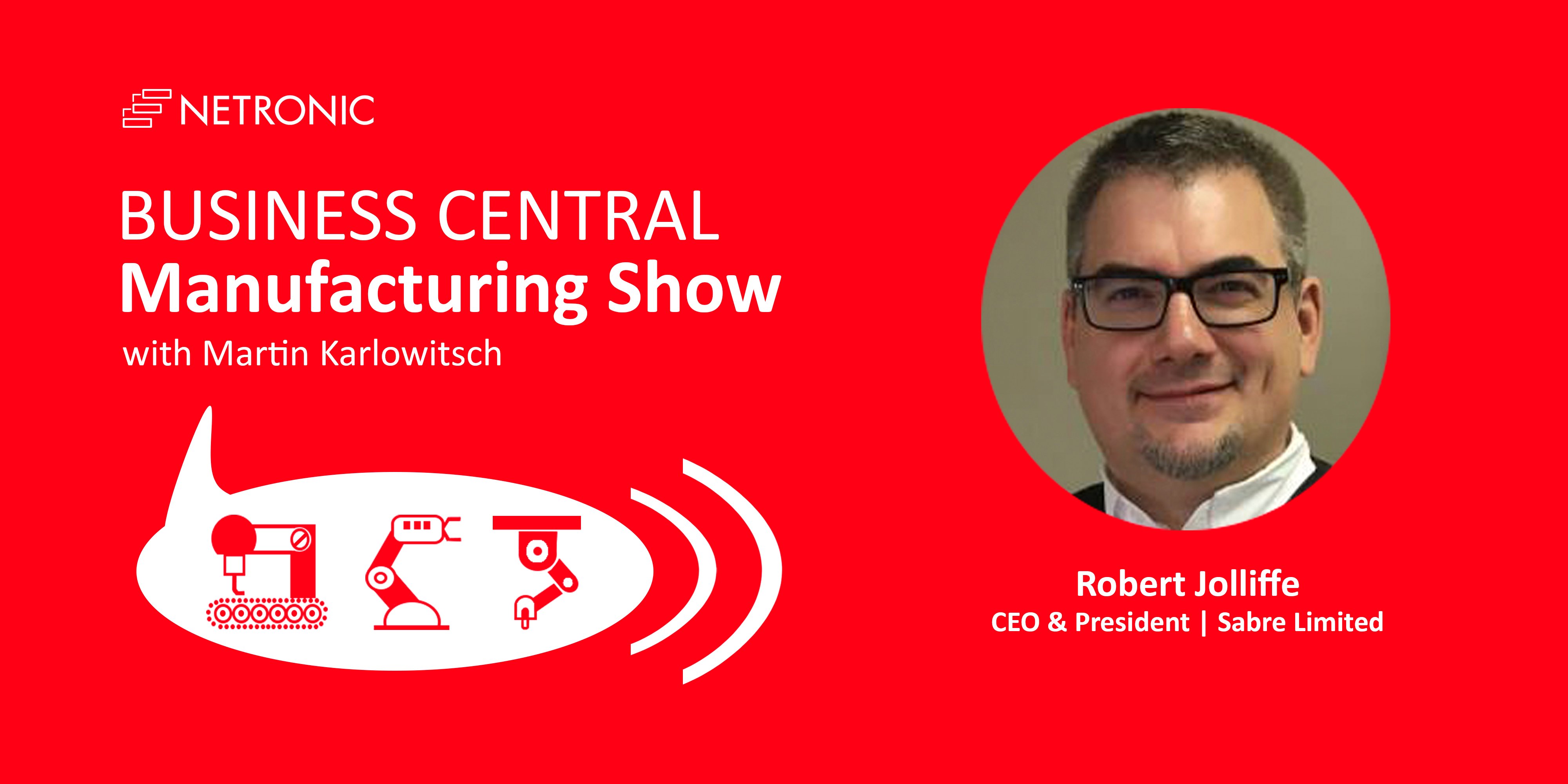Martin met again with Robert Jolliffe for the Business Central Manufacturing Show. He is our first guest, who is on the podcast for the second time. If you missed the first episode with him (in which we searched for the secret sauce of Business Central), I suggest you check it out here.
Robert is President & CEO of Sabre Limited in Canada. He has been an ERP consultant for 25 years and holds a Microsoft Engineer designation. In this episode, Robert shares with Martin why Dynamics 365 Business Central is the right system for engineering-to-order (ETO) companies. Of course, he does this thoughtfully and points out what makes ETOs so special.

This question of what characterizes an ETO also marks the starting point of the conversation. According to Robert, ETO’s normally have more engineers than "typical" shop workers. This means that those companies are more engineering-heavy. These engineers are highly technical people, thus managing human resources is much more important than in production or manufacturing, where you would see a lot more scheduling of machines and equipment.
When Rob and Martin try to understand this in the context of Business Central, Robert explains that the ETO does not typically have any predefined routings nor bills-of-materials (BOMs). BOMs are made even after quotation when the order from the customer has been received already. This is because every final output is a highly customized product with a very low quantity. Oftentimes, the batch size is one.
As a consequence, material requirements planning (MRP), inventory control, and safety stocks, which are the backbone of "typical" manufacturing companies are not important for an ETO. Most of the time, materials are just purchased for a specific project. Hence, data is much simpler and more abstract compared to the data required in a non-ETO manufacturing company.
The focus of ETOs is on the designing and creating of a product once the order is accepted. These orders are usually unique. Below are some of the points of focus for a typical ETO:
- Coming up with a custom quote without a fully defined structure/ scope of the product/ solution
- Designing of the product/ solution
- Procurement of specific components to build the product
- Long lead time parts/ critical items (custom vendors, expensive items, etc.)
- Building custom BOMs for the assembly (sometimes manufacturing)
In terms of managing projects, a lot of ETO customers come from using Microsoft Excel and migrate to Business Central. By using an all-in-one business management software such as Dynamics 365 Business Central, ETOs look for ways to standardize their assembly, purchasing, or planning.
Companies that have recurring project structures or projects with similar customer types can use job templates that contain standardized information. This standardized information then helps to manage the project and to prepare the quote for the customer. Examples are:
- Average hours (also derived from comparing planned versus actual from previous projects)
- Breakdown of hours (engineering, assembly, etc.)
- Design process
- Items used
Here’s a sample process revealed by Robert to bring this information into action with Business Central:
- Create a new job
- Create and load long lead time items
- Create the job tasks to come up with the costing structure
- Changing job status would go through an approval process from the engineers
- Once approved purchasing would purchase the necessary items
- Planning & scheduling would be done using either Business Central or a visual planner or Microsoft Excel (still)
We invite you to listen to our episode with Robert and learn more about ETO companies, what makes them different from manufacturing companies, their unique processes, the ERP implementation process, and some issues to anticipate.
You can tune in below 👇 or anywhere you get your podcasts.
📢 What to listen for
- [03:28] What makes an Engineering-to-order (ETO) special (high-level)
- [04:17] Classifying business into ETO, discrete manufacturing, and job shops
- [06:32] A deep dive into ETOs - what exactly is important to a typical ETO company
- [12:39] Understanding how Business Central helps ETOs quote their projects to their customers
- [14:00] Robert’s first experiences dealing with ETOs
- [17:40] What does the typical ETO’s process look like and how does working with Business Central help ETO?
- [22:34] Where do scheduling and planning take place in the ETO’s process?
- [25:50] ETOs and the term project manufacturing – what role does manufacturing play in an ETO?
- [35:57] Implementing an ERP system to an ETO versus a typical manufacturing customer
- [38:25] Change management and the most challenging part working with ETOs
Links to love ❤️
- The Business Central Manufacturing Show home
- Sign up for an upcoming webinar on visual scheduling for Microsoft Dynamics 365 Business Central
- Martin Karlowitsch on LinkedIn
- Robert Jolliffe on LinkedIn
